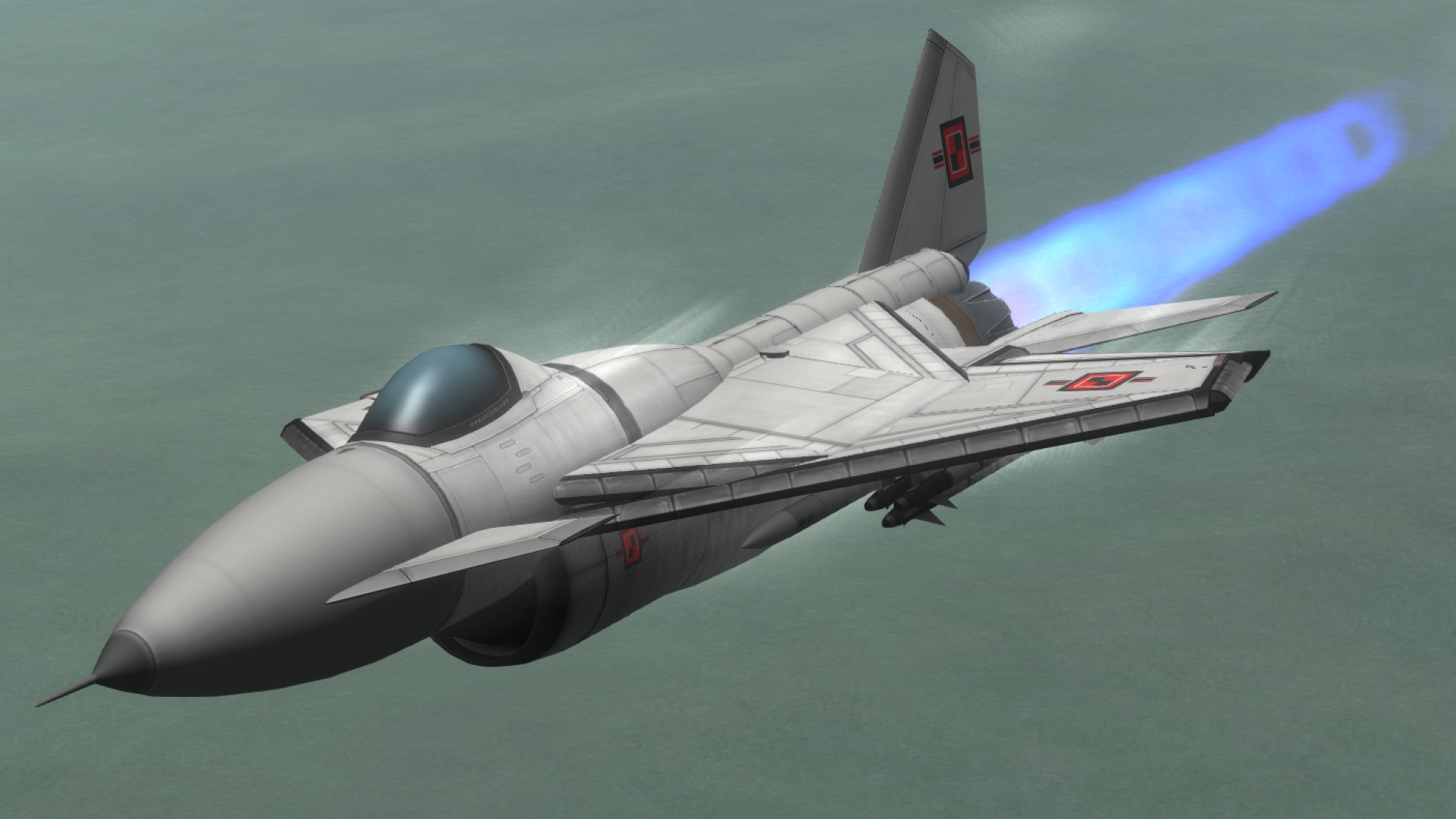L-23 Jastreb
|
L-23 Jastreb
PAI L-23 Jastreb
|
|||||
|---|---|---|---|---|---|
| Aircraft | |||||
 |
|||||
| L-23E Mod 2 conducting a training flight over central Kalbanija | |||||
| Role | Multirole Fighter | ||||
| National Origin | Socialist Federative Republic of Kalbanija New Kalban Republic |
||||
| Production History | |||||
| Designed | |||||
| Unknown - 2141 | |||||
| Produced | |||||
| 2141 - ongoing | |||||
| Designer | Balgred Aeronautical Institute Pecovia Aeronautical Institute |
||||
| Unit Cost | [funds cost](√) | ||||
| Number Built | >600 | ||||
| Service History | |||||
| In Service | |||||
| 2042 - ongoing | |||||
| Used By | New Kalban Republic | ||||
| Aircraft Characteristics | |||||
| Dry Mass | [mass] | ||||
| Length | [length] m | ||||
| Width | [width] m | ||||
| Height | [height w/gear retracted] m | ||||
| Propulsion | 2x J-404 Panther or AL-31 Saturn Afterburning Jet Engines | ||||
| Operational Range | [range in km] km | ||||
| Crew | 1 | ||||
| Sensor Systems | APG-77 Radar WIP - Datalink WIP - TPOD WIP - Missile Warning System |
||||
| Armament | [ship based arms] | ||||
| Variants | First Generation: - L-23A - L-23B - L-23C Second Generation: - L-23D - L-23E Mod 1 Third Generation: - L-23E Mod 2 - L-23F - L-23G |
||||
The PAI L-23 Jastreb is a family of Kalban Multirole aircraft, capable of serving in Air Superiority, Ground Attack, and support roles. Original designs of the aircroft trace back to the Balgred Aeronautical Institute in the SFRK, with the blueprints being recovered and design completed by the Pecovia Aeronautical Insitute in the New Kalban Republic, following the Kalban Reunification. It has been fully redesigned 3 times, and undergone countless other major and minor upgrades.
Originally, the L-23 was a product of a highly classified program for the development of a new air superiority fighter in the SFRK. Following it's collapse and the start of the civli war, all documents about the fighter were hidden in vaults of the Balgred Institute, or destroyed. During the Reconstruction of Kalbanija, the workers examining the facilities of the institute, with Fortisian helpers, breached the vaults and uncovered the designs. Seeing great potential in the design, it was continued, with the goal being for it to serve as the first domestically produced fighter post reunification. The goal was achieved, and the aircraft performed satisfactorily. It was later redesigned in the 2140's, to make use of newer technologies and design proceses, resulting in the creation of the latest, third, generation of the aircraft.